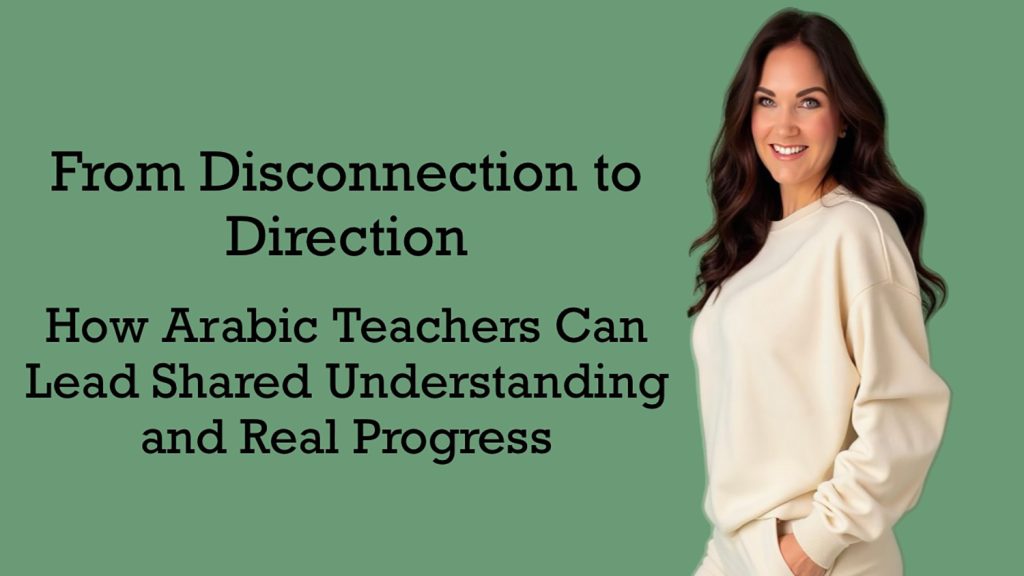Have you ever poured your heart into a lesson… only to feel like your students didn’t quite get it?
You planned carefully. You explained clearly. You even checked for understanding. And yet, you’re left with that quiet ache — a subtle disconnection, as if something essential didn’t land.
You’re not alone.
For many Arabic teachers, this feeling of being misunderstood — or worse, ignored — doesn’t come from a lack of effort. It comes from a missing link: shared understanding.
But the good news? That missing link can be built. And once it’s there, momentum follows.
Why we misunderstand misunderstanding
It’s tempting to think that misunderstanding is a student issue. “They weren’t listening.” “They weren’t trying.” “They didn’t care.”
But what if it’s not about effort at all?
What if disconnection happens when we speak a different language than they are listening for?
At The Cambridge Consultancy Group, we coach Arabic teachers to lead with emotional intelligence, not just instructional technique. And one insight keeps surfacing:
Before our students can understand Arabic… they need to feel understood as learners.
The invisible gap in the classroom
Disconnection often begins when we assume that we are on the same page as our students.
But here’s the truth: we rarely are, unless we actively build that shared page together.
That means checking in — not just on whether they got the right answer, but on whether they understand the why behind it. It means tuning in — to where their minds are emotionally, socially, and linguistically. And it means letting go of assumptions that our lesson objectives are the same as their learning objectives.
Because until there’s shared understanding, there won’t be meaningful progress.
Try this: The 3-Minute Connection Reset
When the classroom feels tense, off-track, or misunderstood — pause. Use what we call the Connection Reset:
- Check the vibe. How are your students entering this space? Excited? Nervous? Distracted? Hungry?
- Name the feeling. Say something human. “It feels like there’s a lot on our minds today.” Students connect with teachers who connect with reality.
- Rebuild the frame. Re-centre the session with clarity. “Let’s make sure we all understand what success looks like in this activity – and why it matters to you.”
This takes less than three minutes. But the effect is profound.
Shared understanding leads to shared momentum
When students feel heard, they lean in. When they feel safe, they take risks. When they feel seen, they engage — not out of obligation, but because something about the experience feels personal and purposeful.
And isn’t that the classroom we’re all trying to build?
We want our learners to make progress. But not just any progress. Meaningful progress. The kind that changes how they see themselves, their language, and their culture.
That can only happen when they know we are with them — not just teaching content, but co-authoring understanding.
The shift starts with you
If you’ve felt that ache of disconnection lately — take heart. You’re not failing. You’re noticing.
And that’s the first step towards transformational leadership in the classroom.
So today, instead of pushing harder, try reaching further.
Instead of fixing the lesson, fix the connection.
And if you need a guide to help you tune in, build trust, and make Arabic learning come alive for every student — we’re here. This is what we do at The Cambridge Consultancy Group.
Because connection isn’t a luxury in language teaching.
It’s the bridge to everything.


